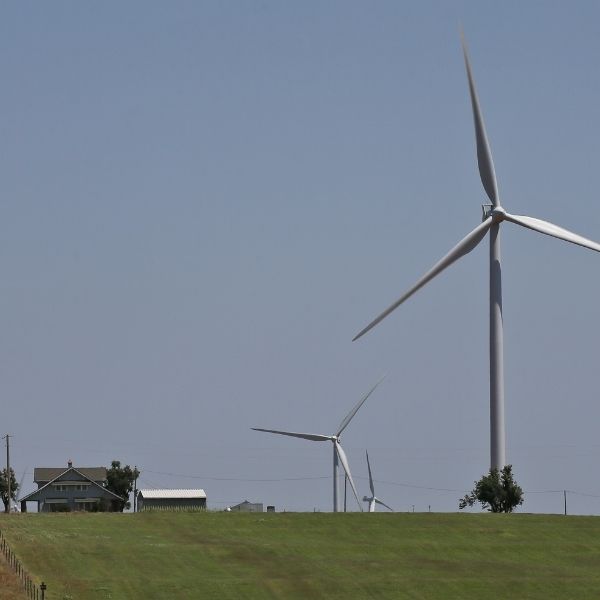Wind power currently generates over 40% of Oklahoma’s electricity, and solar companies have been eyeing the state for future projects. But advocates warn that Oklahoma’s leadership in renewable energy could falter with the passage of a sweeping new megabill.
Alongside tax and Medicaid changes, the bill overhauls key incentives for clean energy projects. Right now, companies benefit from tax credits that help offset the costs of operating renewable energy facilities.
Those credits—including incentives for electric vehicles and home energy improvements—are now scheduled to phase out over the next few years. Kylah McNabb, head of Vesta Strategic Solutions and executive administrator for the Oklahoma Renewable Energy Council, says the cuts will likely halt renewable energy development in the state.
“It’s just incredibly devastating—I hesitate to use a term that strong, but it is devastating,” McNabb said. “The bill is changing the business environment these projects rely on. And Business 101 says you need a stable policy environment to make smart, long-term investments.”
“What this bill has done,” she added, “is essentially yanked the rug out from under projects still in development.”
Supporters of the legislation, including the American Petroleum Alliance, praised the move to deregulate fossil fuels and open more land for drilling.
“This is the most important energy bill in a generation,” the organization said in a press release. “President Trump has delivered on his promise to unleash American energy by unlocking investment opportunities, boosting global competitiveness, and expanding lease sales from the Gulf to Alaska.”
Meanwhile, clean energy and environmental advocates are alarmed. The bill cuts several tax credits introduced under the Inflation Reduction Act—the Biden-era law widely regarded as the country’s first major climate change effort. Homeowner incentives for solar panels and energy efficiency upgrades will disappear by year’s end. The $7,500 federal tax credit for electric vehicles will also be eliminated. As of July 2025, around 23,000 EVs are registered in Oklahoma.
The megabill was signed into law just two weeks after utility representatives and the Southwest Power Pool warned the Oklahoma Corporation Commission about soaring energy demand that could soon outpace the state’s supply.
Energy-hungry AI data centers are a major part of that demand. Mayes County already hosts a Google data center, and several other companies have similar plans elsewhere in the state.
As the demand grows, a key question remains: how will Oklahoma generate enough power, and from what sources?
Natural gas currently supplies about half of the state’s electricity and is seen as reliable. But with gas turbine equipment facing production delays of up to seven years, new facilities may not be ready in time.
“Solar and battery storage are the fastest and cheapest ways to provide stable power in the next three to five years,” McNabb said. “That’s the technology we already have on hand.”
A 2025 report from the U.S. Energy Information Administration shows that solar energy is, on average, cheaper to generate than natural gas in most areas—even without tax credits. Oklahoma had begun expanding its solar capacity, but McNabb believes that progress is now at risk.
“We’re going to lose out on grid stability and the chance to offer affordable power to both Oklahomans and the Southwest Power Pool,” she said.
There’s still a window of opportunity, though. Projects currently underway can still qualify for the tax credit. Wind and solar installations have until the end of 2027 to meet eligibility.
















Leave a Reply